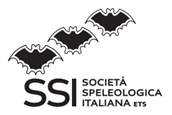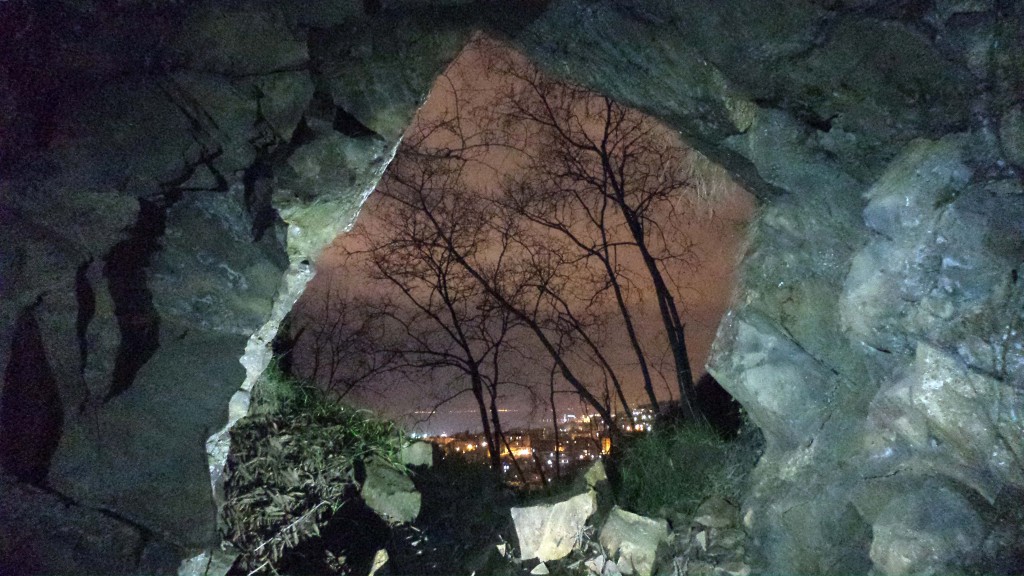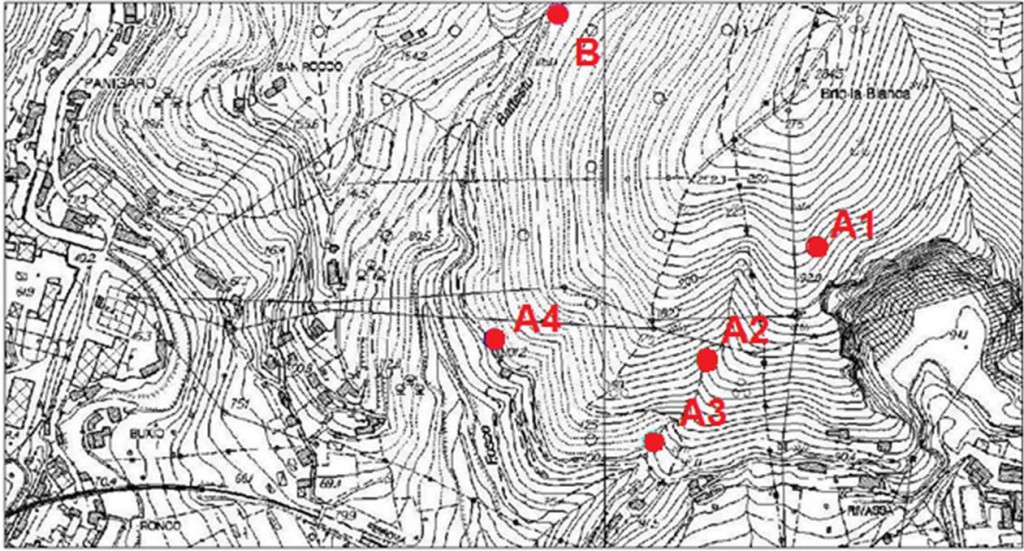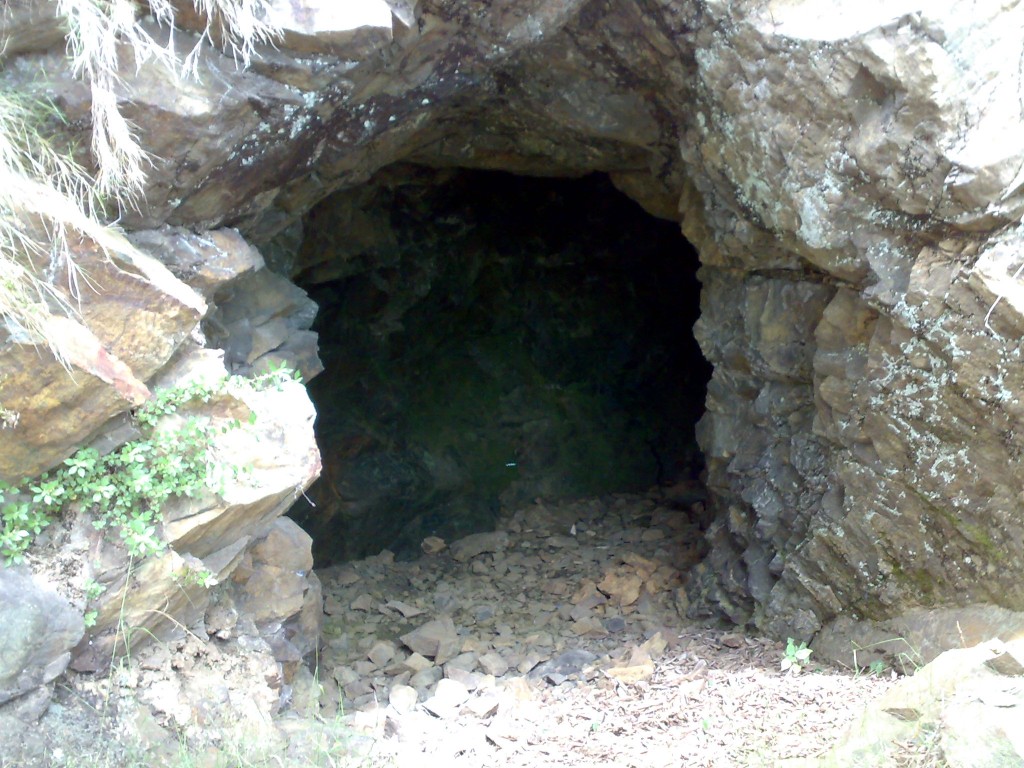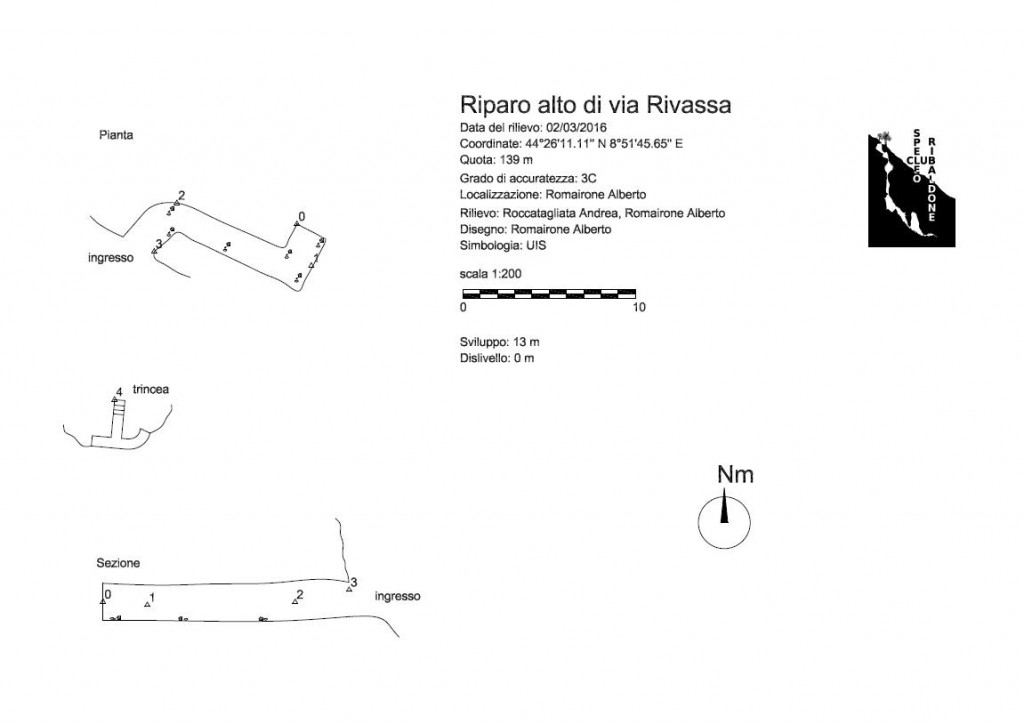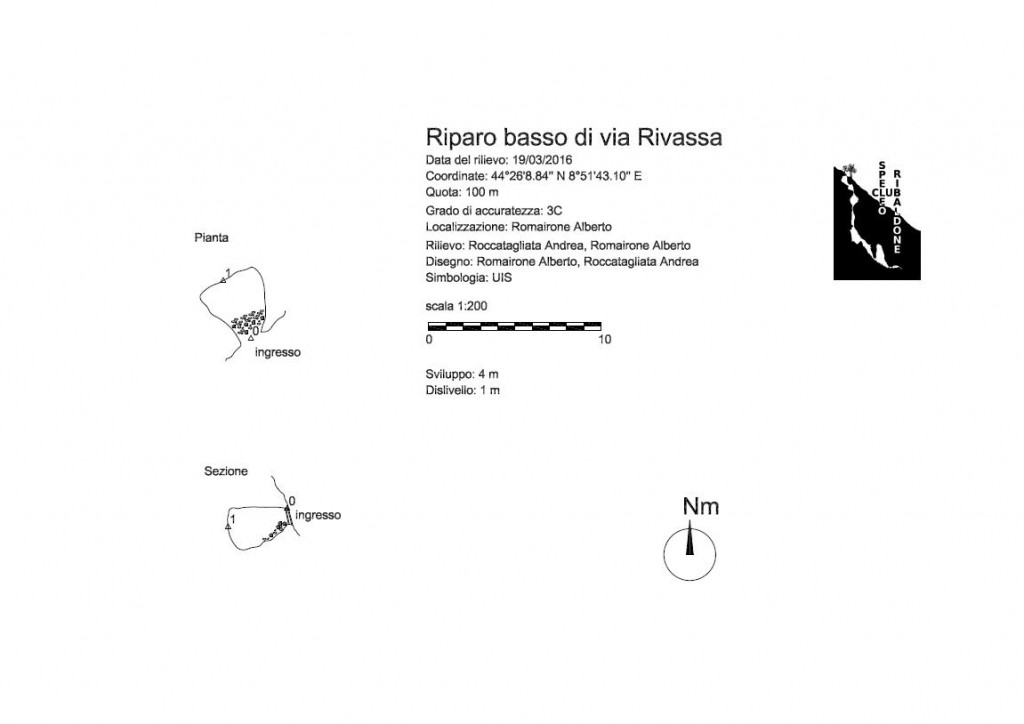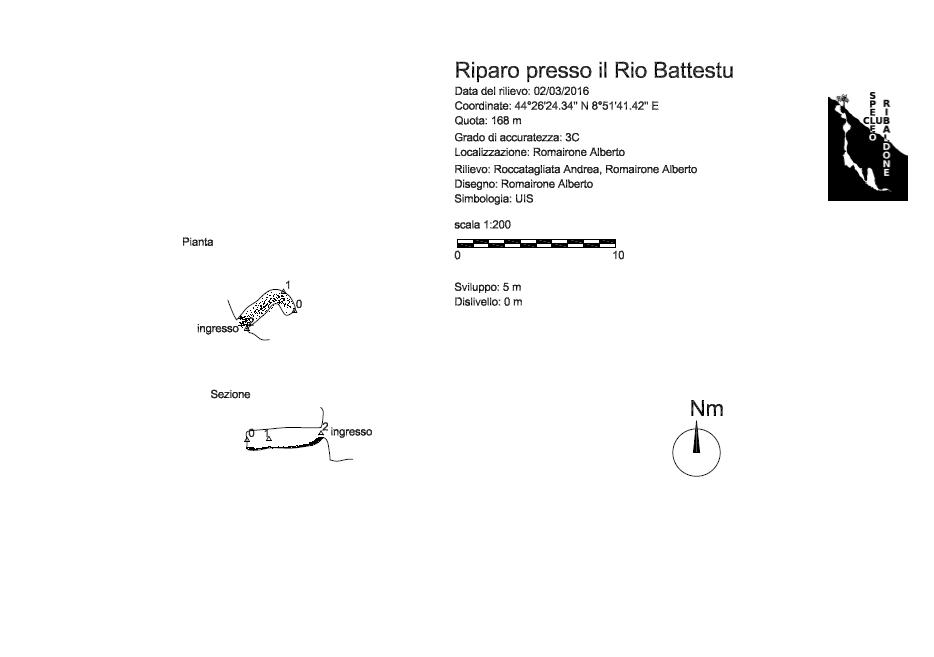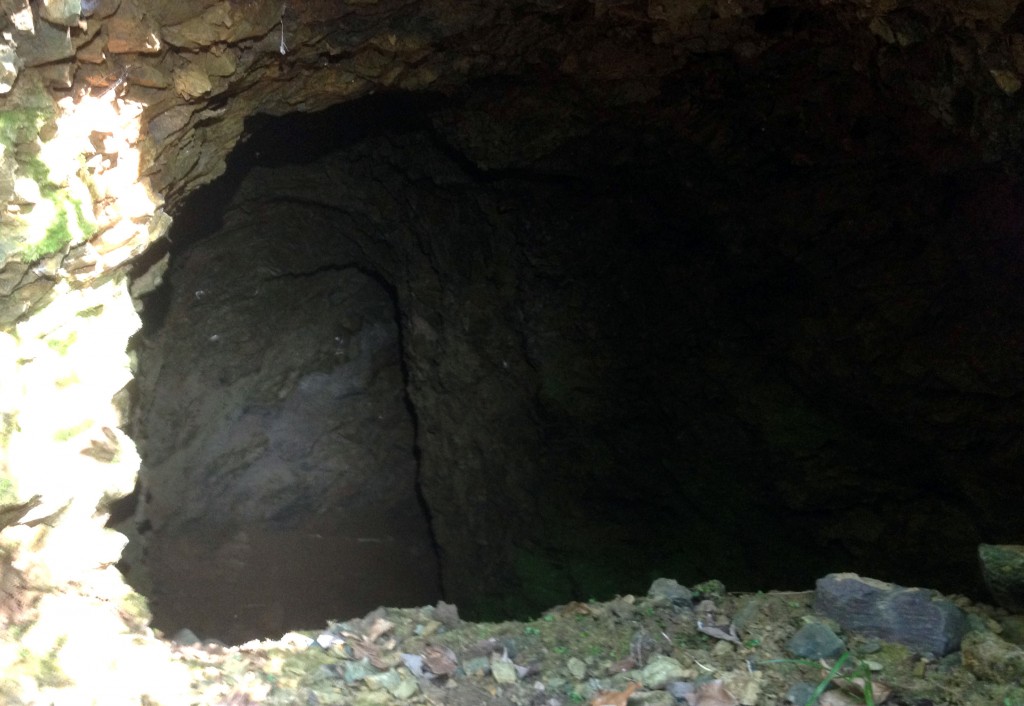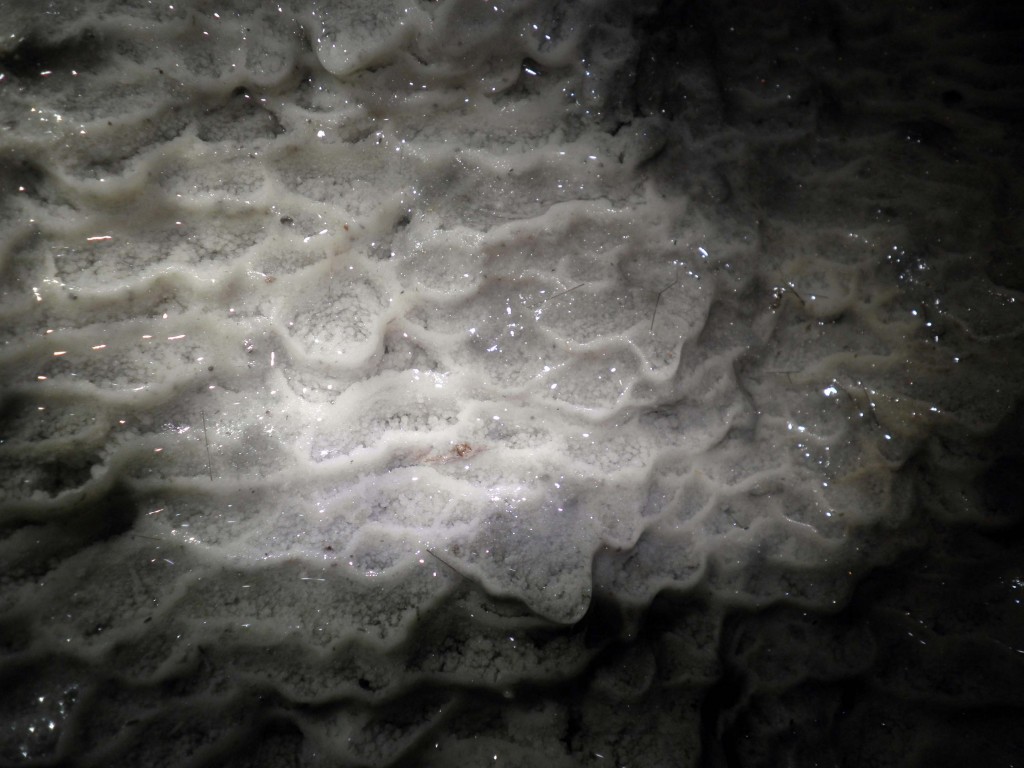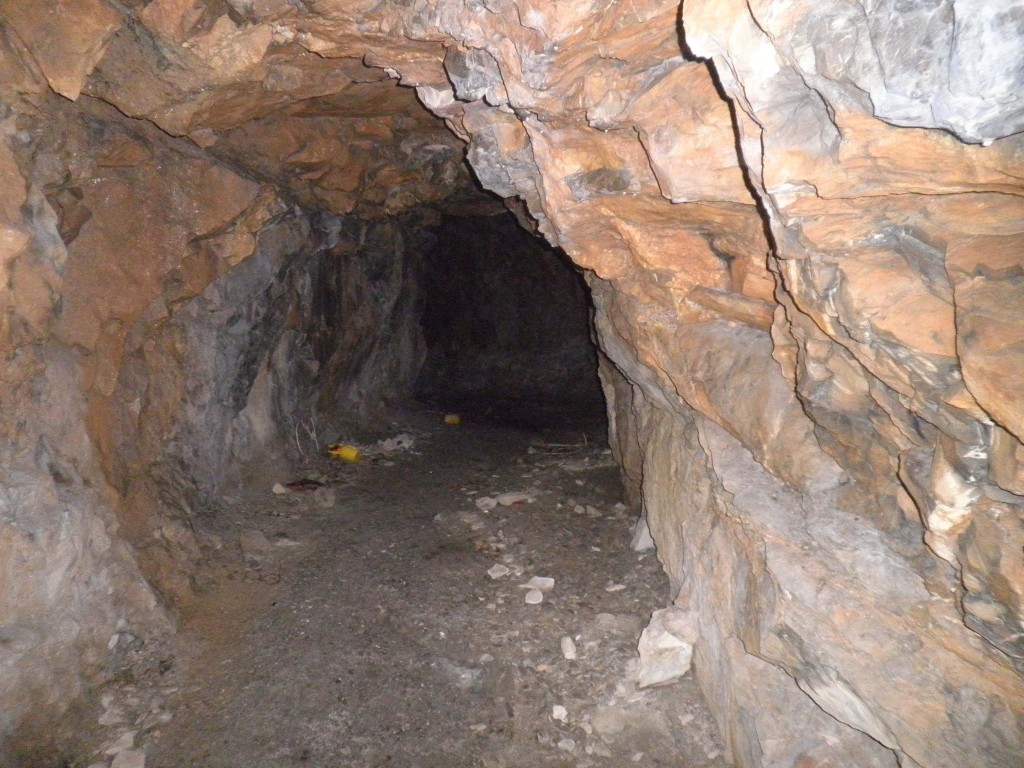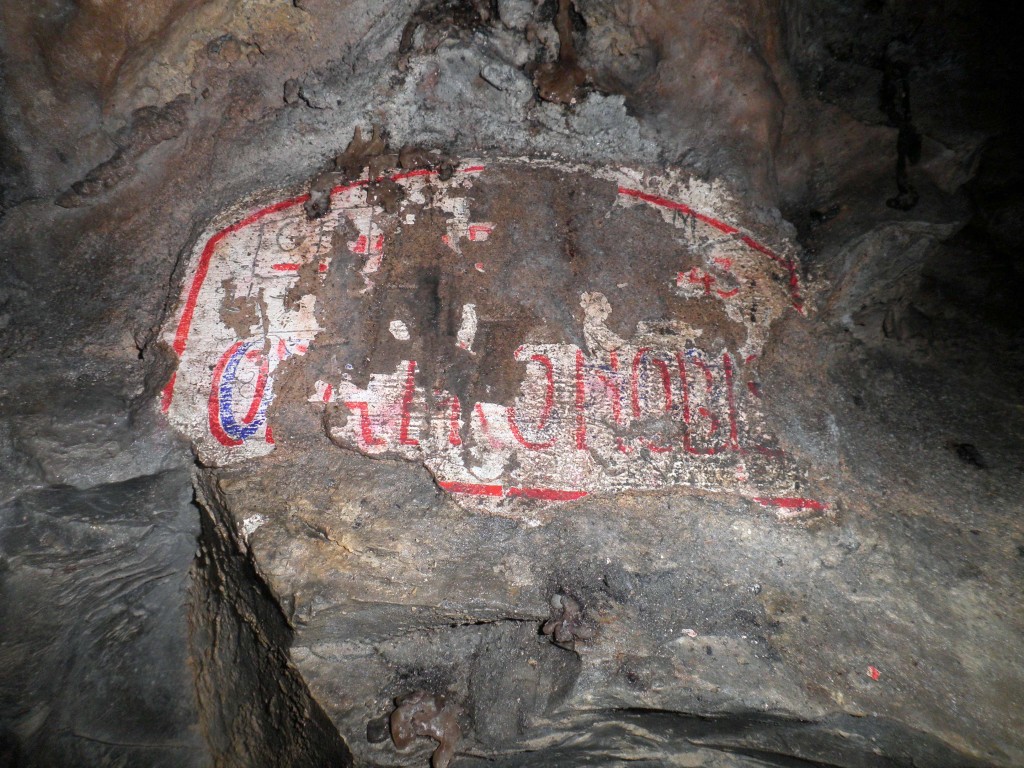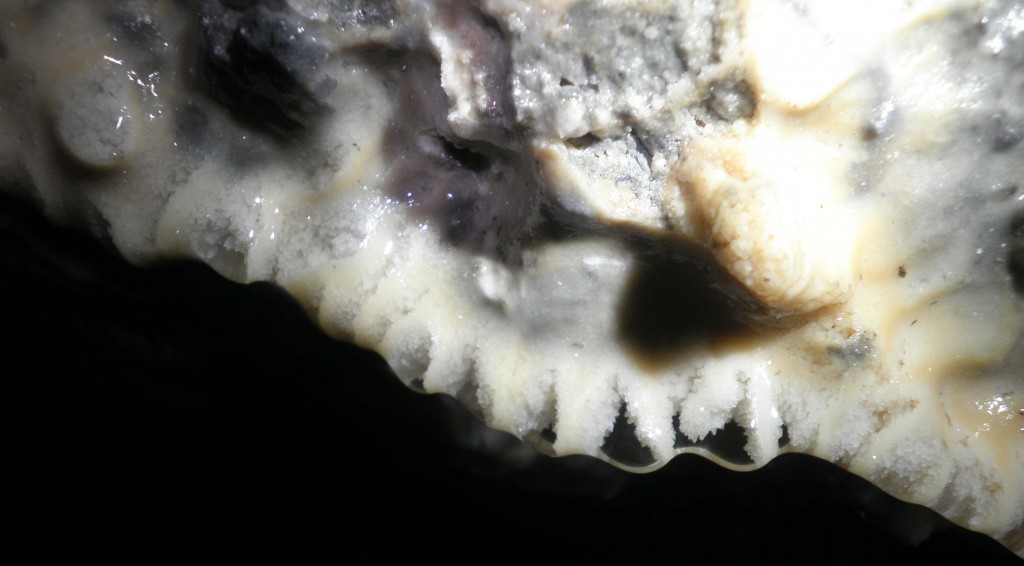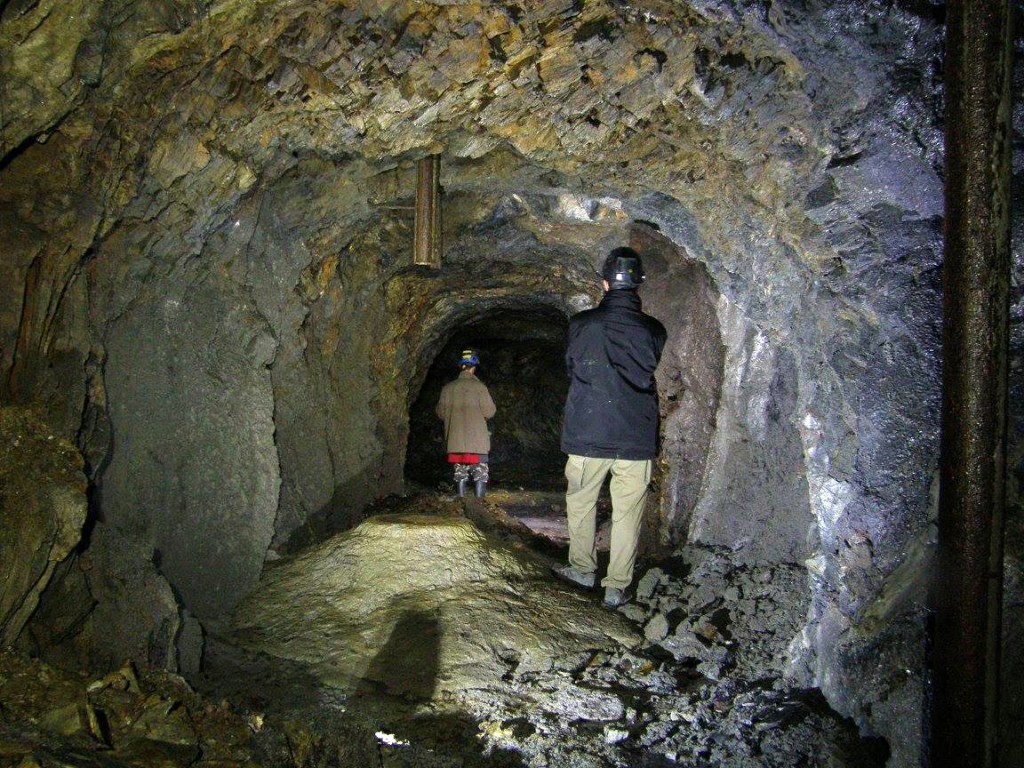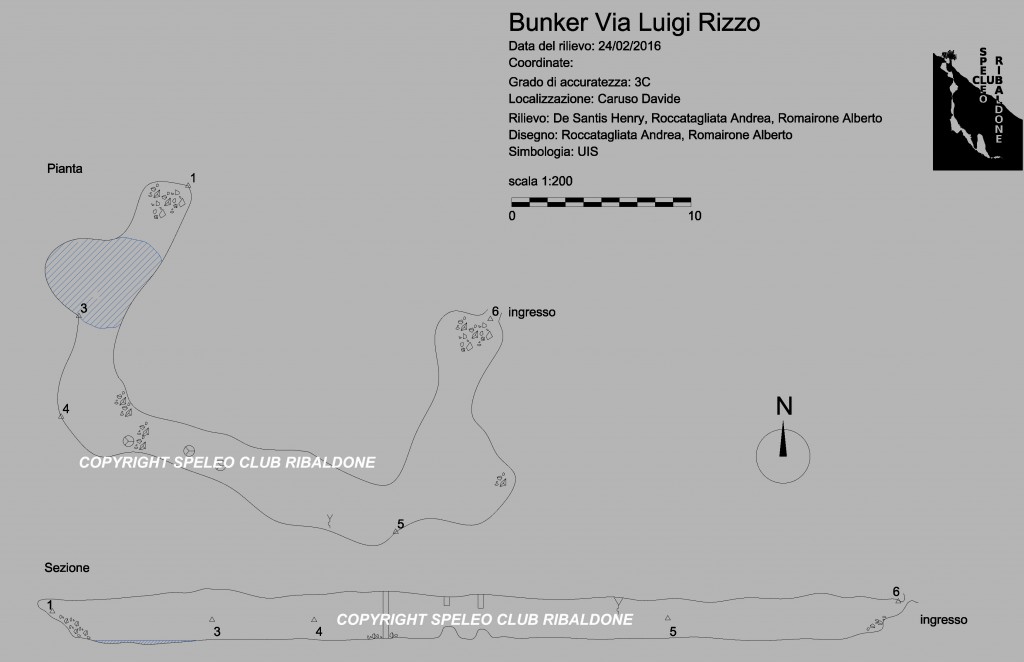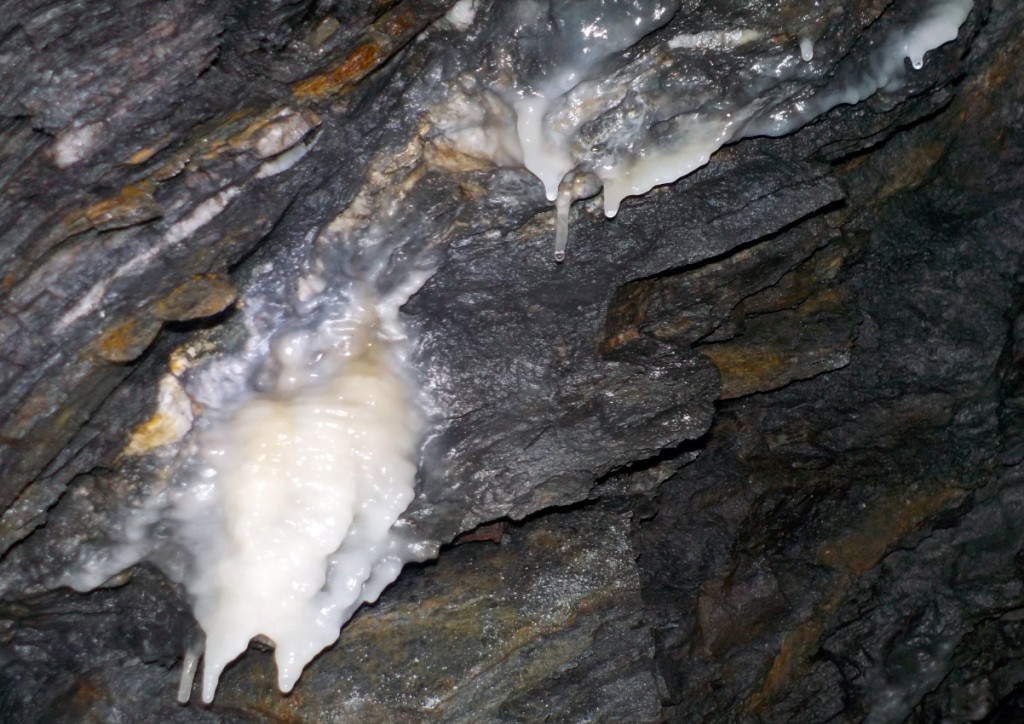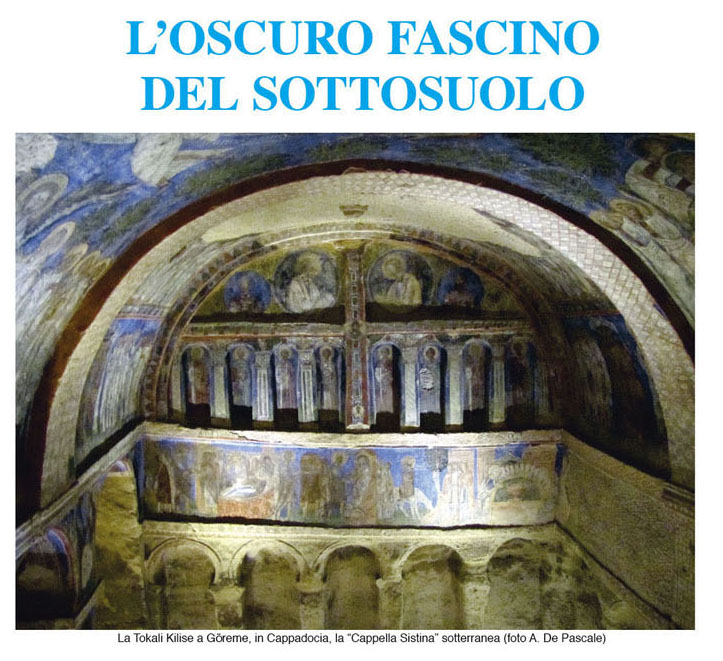Tag: Opera Ipogea
Atti IX Convegno Nazionale di Speleologia in Cavità Artificiali
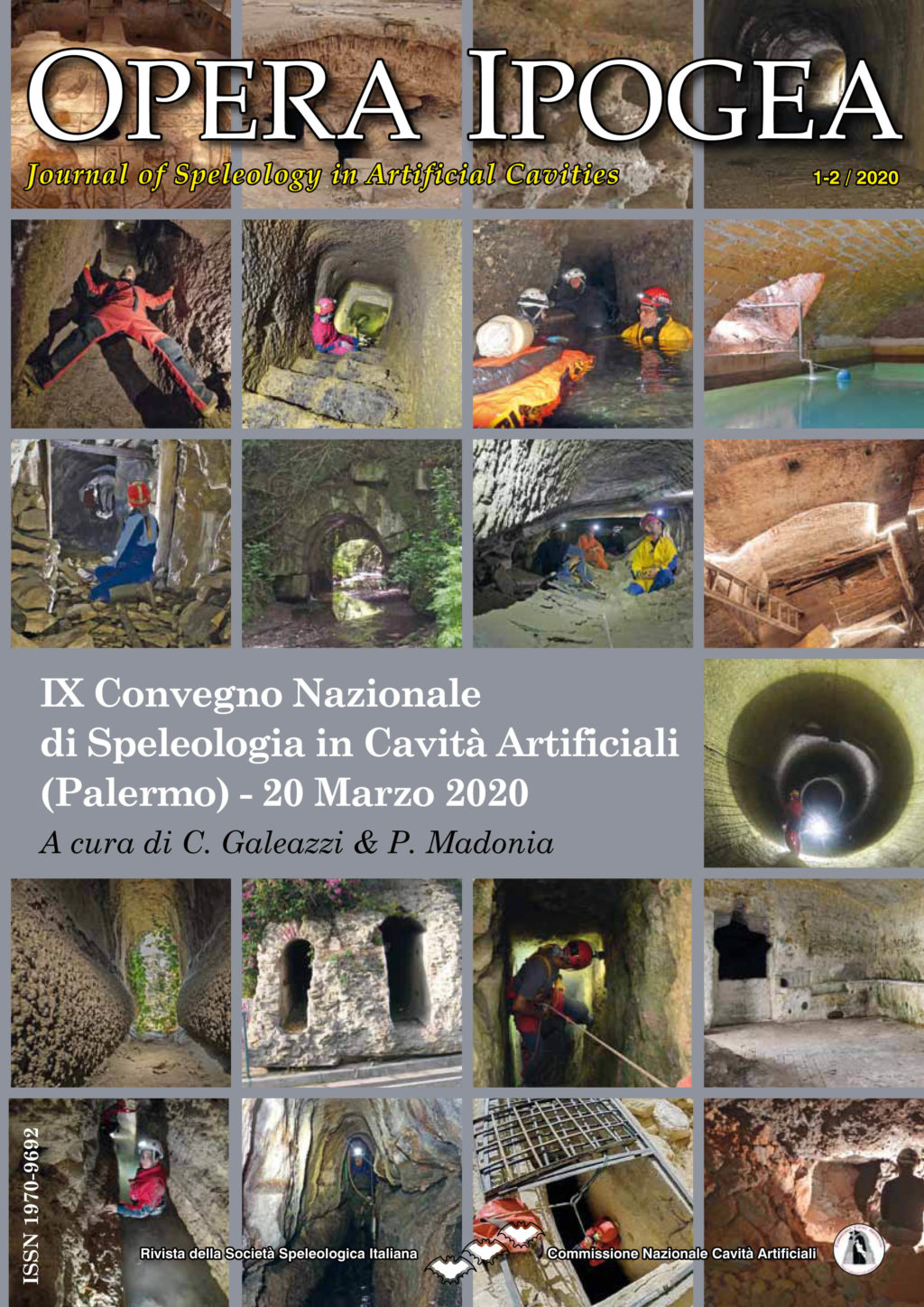
Quando in Italia inizia l’emergenza coronavirus, è il 20 febbraio, il convegno è pronto: un anno di lavoro, circa 50 contributi ammessi, numerosi iscritti, disponibilità di una sede istituzionale, autorizzazioni esclusive per poter visitare alcune cavità artificiali di Palermo ed effettuare interessanti escursioni nei complessi ipogei del territorio circostante. Subito dopo, però, le progressive restrizioni alle attività permesse sul territorio nazionale, conseguenti alle norme emanate da vari livelli istituzionali per contrastare l’epidemia da COVID-19, cominciano a fare sentire i loro effetti. Il 23 febbraio viene revocata, in via cautelare, l’autorizzazione all’uso della sede prevista per lo svolgimento del convegno. Individuiamo quindi una nuova possibile sede e iniziamo a modificare tutta la logistica dell’evento, ma il primo di marzo vengono diramate ulteriori misure restrittive, con divieto di utilizzo di strutture pubbliche per eventi di tipo assembleare. Le successive restrizioni imposte dal DPCM dell’8 marzo renderanno impraticabile anche questa ipotesi, precludendo ogni possibilità di svolgere il convegno con modalità che prevedano una compresenza dei partecipanti.
Non volendo deludere attesa e aspettative, abbiamo deciso quindi di svolgere il convegno in via telematica nella sola giornata del 20 marzo, il che ha comportato una ennesima, velocissima riorganizzazione, resa possibile anche grazie alla collaborazione imprescindibile dei tecnici informatici INGV, che hanno fornito il loro supporto all’approntamento della piattaforma software necessaria alla realizzazione del convegno.
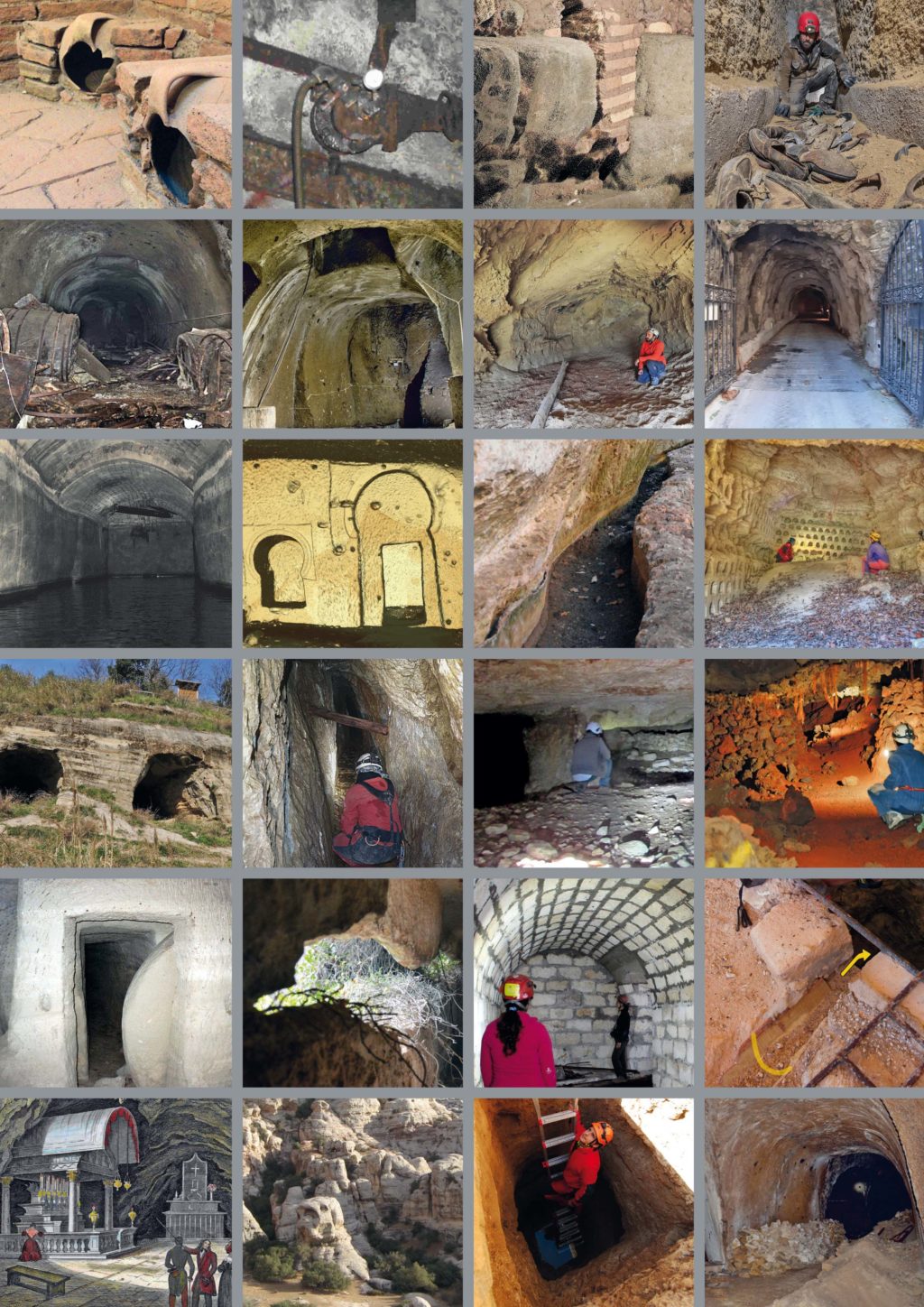
Il focus delle tematiche è stato rappresentato dalla sessione dedicata alle Antiche opere idrauliche, che avrebbe dovuto svolgersi in concomitanza con la Giornata Mondiale dell’Acqua, che ha preso in esame, in particolare, i sistemi di raccolta delle acque meteoriche (pioggia e neve), che oggi come ieri ricoprono un ruolo importante nell’approvvigionamento idrico di molte città. Ma non sono mancate sessioni dedicate alle altre tipologie di cavità artificiali: opere minerarie ed estrattive, insediative civili, di culto e militari nell’ambito delle quali sono stati presentati contributi di indubbio interesse, consentendo di acquisire una panoramica aggiornata degli studi condotti negli ultimi anni in tema di cavità artificiali.
Nella sessione Monitoraggio e prevenzione sono risultati di particolare rilievo gli scenari aperti dallo studio delle variazioni climatiche attraverso le analisi geochimiche delle acque sotterranee, e dalla ricerca di siti ipogei artificiali atti ad ospitare strumentazione geofisica per il monitoraggio sismico e per lo studio di precursori sismici,entrambi condotti dall’Istituto Nazionale di Geofisica e Vulcanologia, in collaborazione con associazioni speleologiche. Sono stati presentati inoltre casi campione in ordine alle problematiche connesse al dissesto geo-idrologico in ambito urbano e uno studio sulla possibilità di individuare le cavità sotterranee inaccessibili attraverso tomografie elettriche e sismiche.
Il volume degli atti è pubblicato su questa rivista.
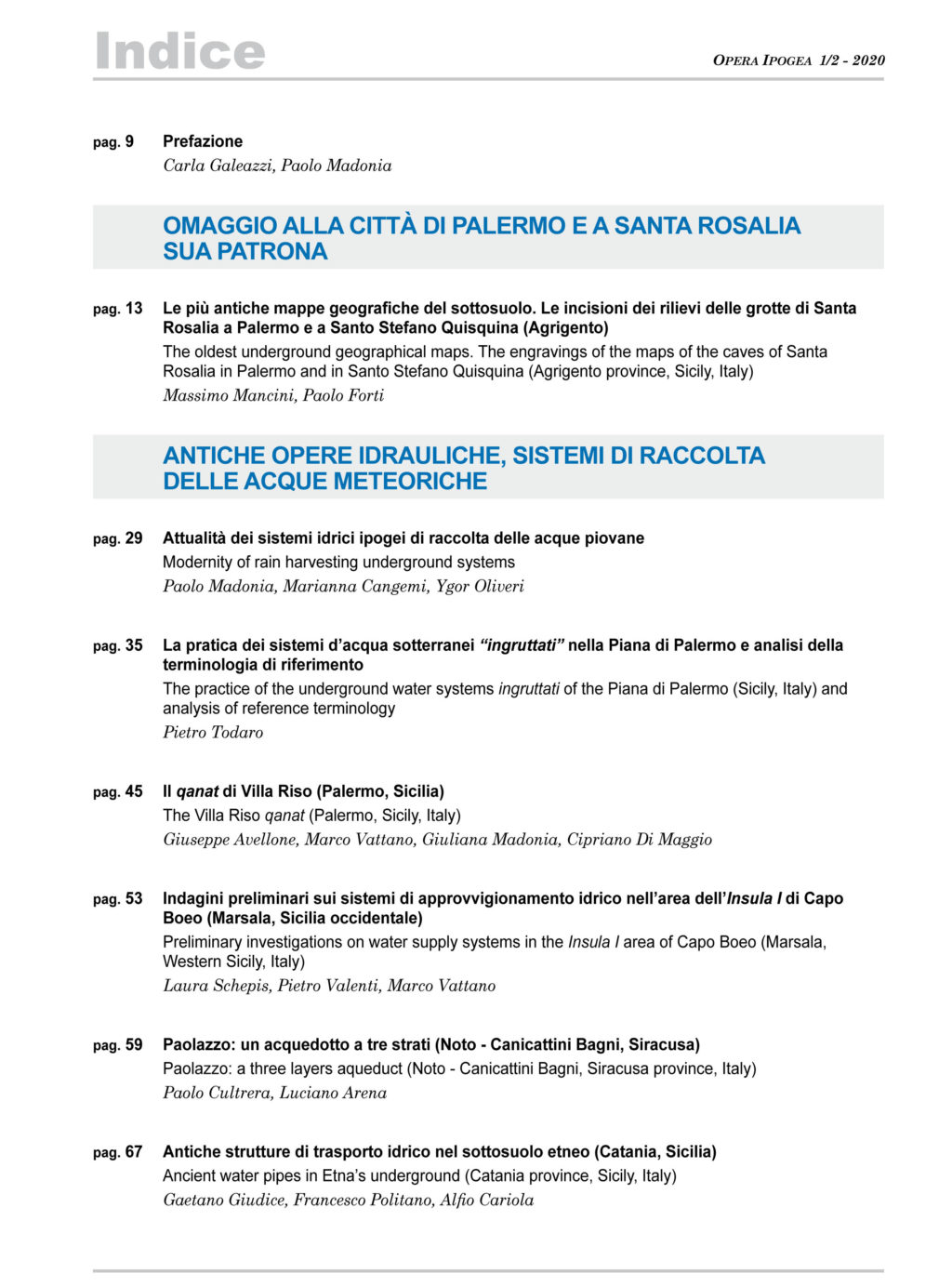
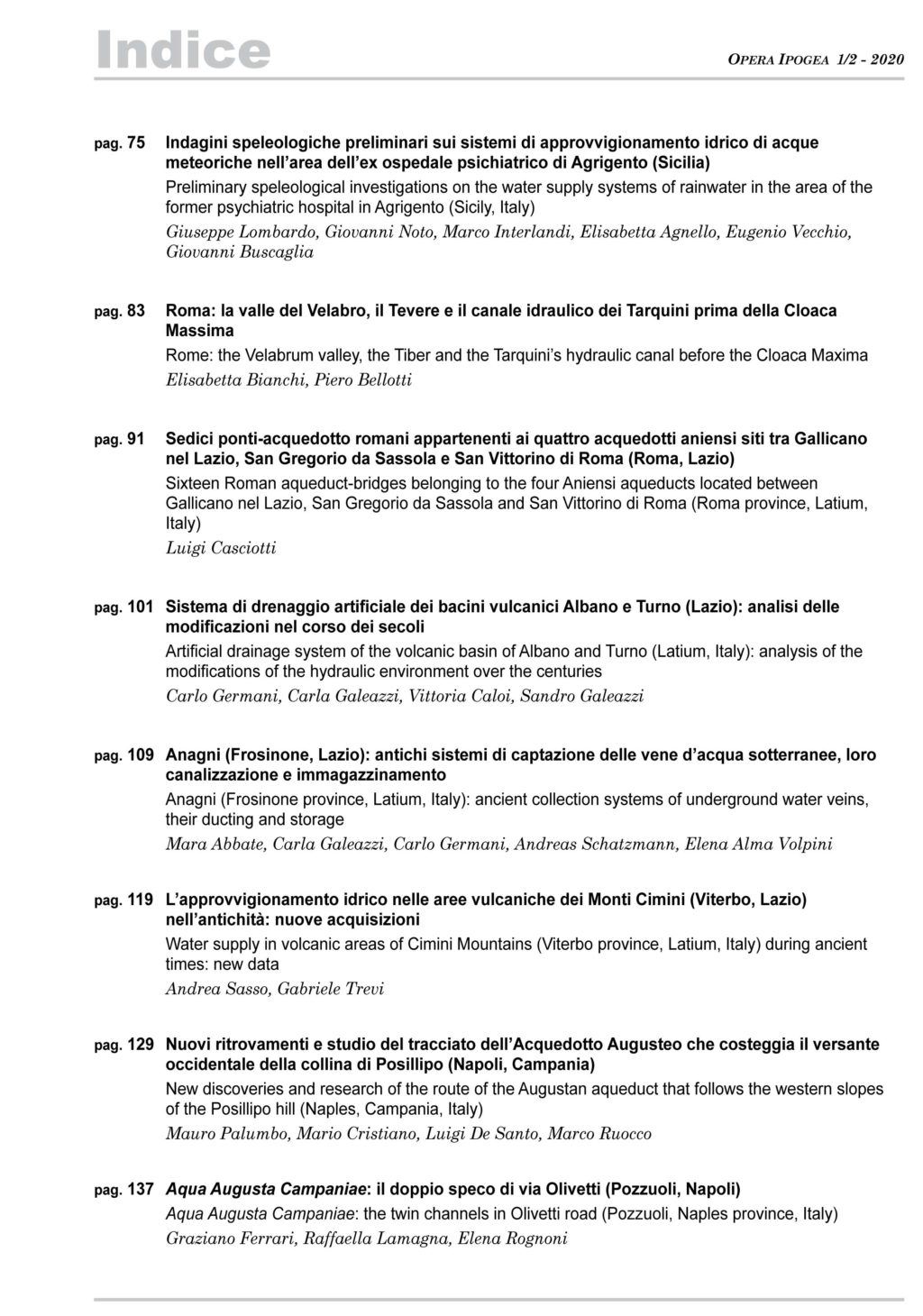
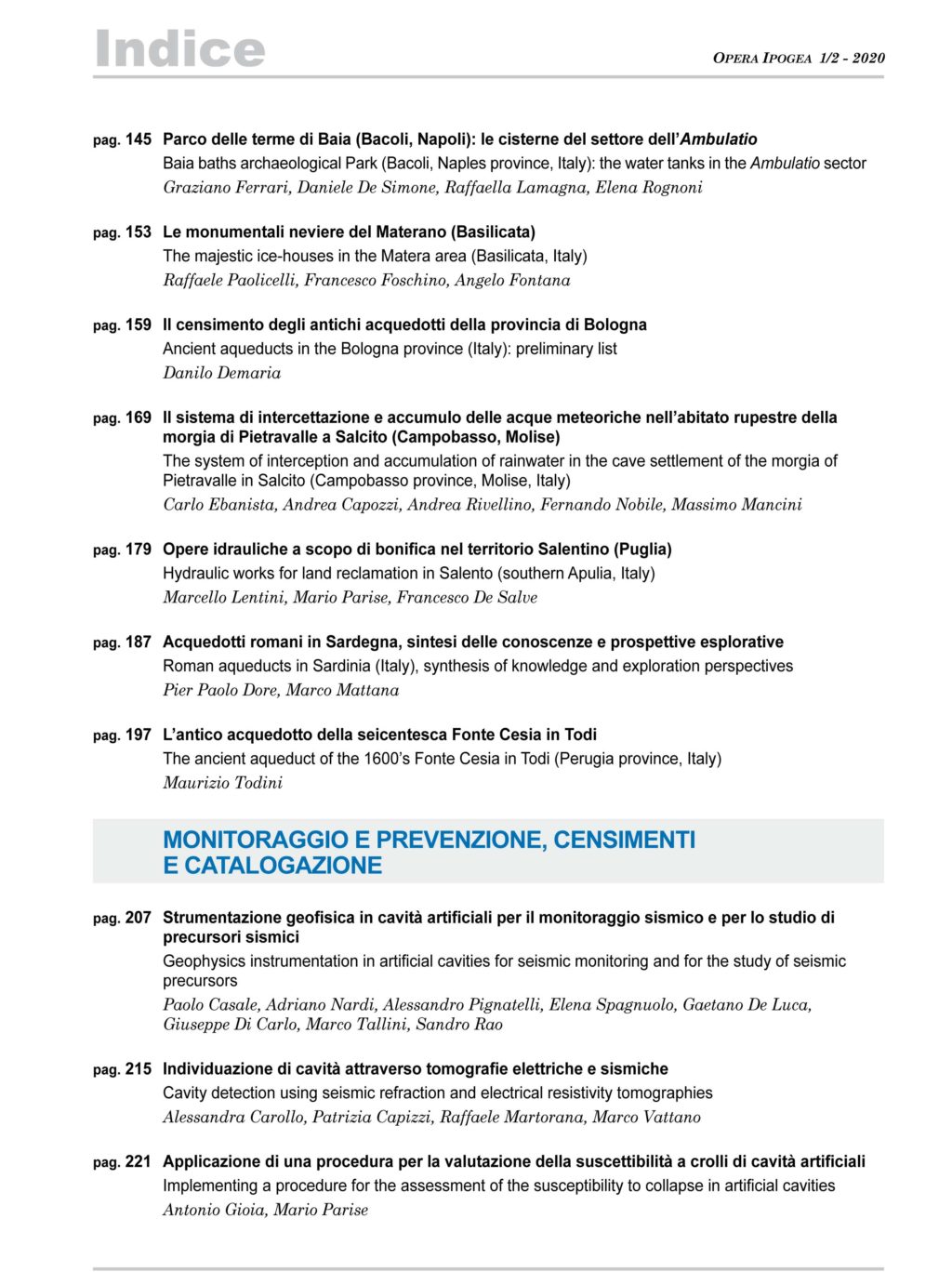
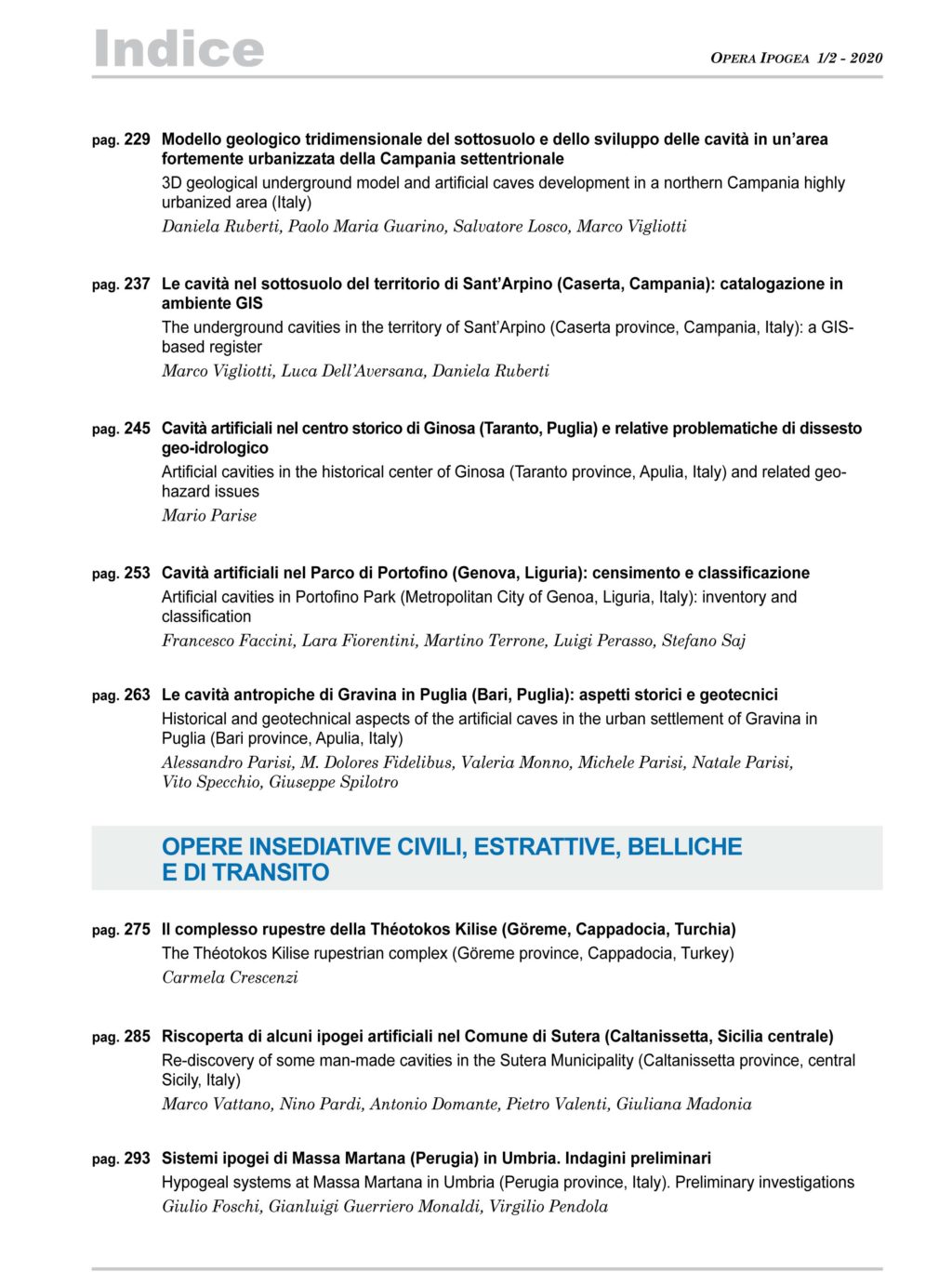
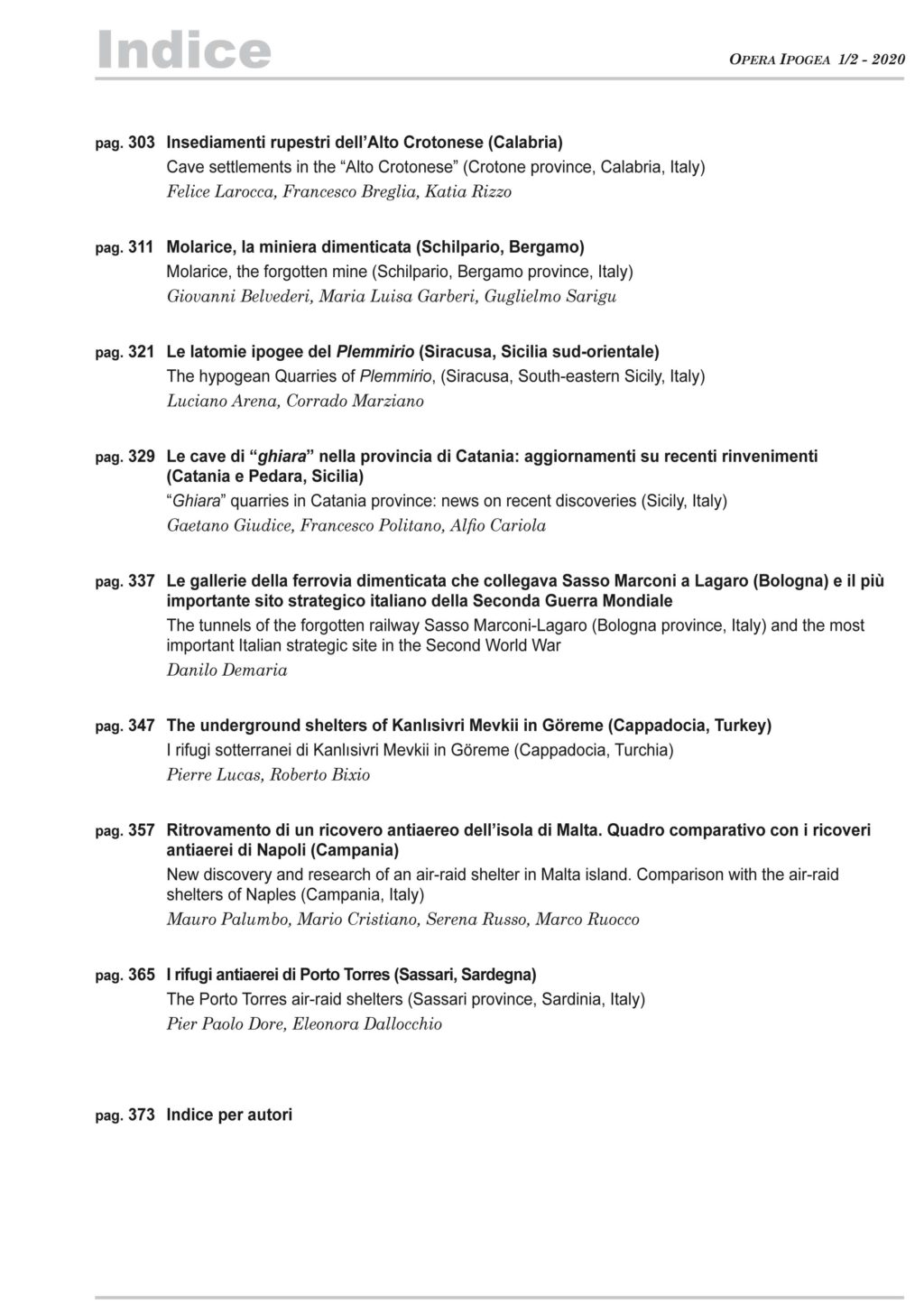
Il rifugio antiaereo di Molassana (Genova)

Nell’ambito delle ricognizioni effettuate all’interno di ipogei inediti, siti nel Comune di Genova, si è provveduto a visitare e rilevare una struttura di protezione antiaerea che si trova nel quartiere genovese di Molassana. La pianta generale del rifugio è a tridente con tre ingressi, dei quali, quello centrale, occluso da materiale franato dalla collinetta soprastante. Gli accessi sono protetti da muri anti soffio dello spessore di circa 1 m.
La galleria dell’interno, dello sviluppo lineare complessivo di circa 70 m, ha una larghezza variabile da 3 a 1,5 m e un’altezza media di 2 m. ed è caratterizzata da bellissime concrezioni calcaree di diverse e complesse fogge e cospicua presenza di fauna ipogea. è stata infatti visivamente rilevata la presenza del pipistrello Rhinolophus ferrumequinum, del geotritone del genere Speleomantes, dell’artropode Scutigera coleoptrata e della caratteristica lumachina blu del genere Oxychilus.
Si segnala inoltre la presenza, nei pressi del ingresso centrale, di una piccola edicola votiva di forma triangolare sotto la quale è ancora parzialmente leggibile un’iscrizione di colore rosso, recante la dicitura “Ora pro nobis”, ed il numero 43, forse l’anno di costruzione della struttura o di dedica dell’effige sacra attualmente scomparsa. Come di consueto, seguiranno indagini archivistico-bibliografiche al fine di approfondire il contesto in cui si colloca la struttura.
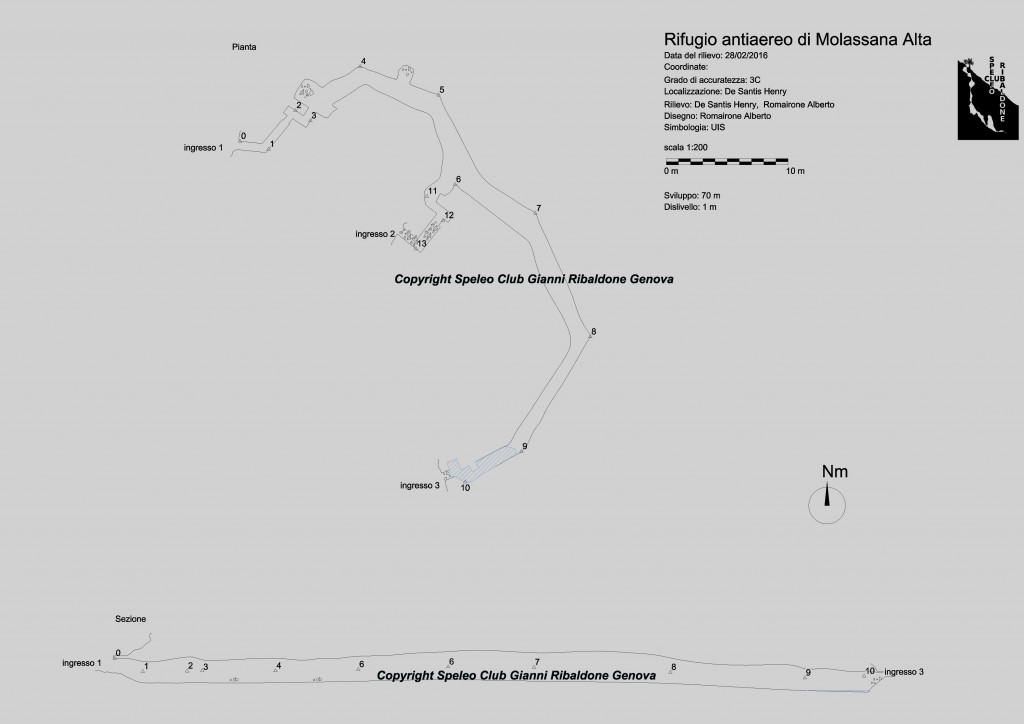
Rifugio antiaereo Genova Molassana (Copyright Archivio Speleo Club Gianni Ribaldone Genova riproduzione vietata).
Contributo di Henry De Santis con la collaborazione di Alberto Romairone e Andrea Roccatagliata (Speleo Club Gianni Ribaldone Genova).
Il Bunker antiaereo di Genova Pegli
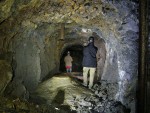
Nell’ambito dell’attività di speleologia in cavità artificiali lo Speleo Club Gianni Ribaldone Genova ha in corso diverse esplorazioni di ipogei inediti siti nel comune di Genova. Attualmente, la ricognizione ha avuto per oggetto una struttura sotterranea, posta nel quartiere genovese di Pegli, la cui destinazione d’uso è in fase di accertamento poiché, pur ipotizzando che avesse una funzione di protezione antiaerea, è scavata in una vena di Metagabbri ferrosi, formazione geologica che potrebbe far pensare ad un saggio minerario. Non è escluso che inizialmente l’ipogeo fosse stato ricavato per questo ultimo scopo e, successivamente, riadattato alle esigenze belliche.
La pianta generale è a ferro di cavallo con due ingressi, dei quali uno occluso da materiale franoso e l’altro parzialmente obliterato da materiali di risulta e rifiuti. L’unica galleria dell’interno, dello sviluppo lineare complessivo di circa 55 m, ha una larghezza variabile da 2 a 5 m ed un’altezza media di 2,25 m e dentro di essa sono fiorite delle belle concrezioni calcaree, complice anche il vivace stillicidio presente.
Curiosa la presenza di alcuni pali per fondamenta che hanno sfondato il tetto della cavità e attraverso i quali è colato parecchio cemento che ha creato delle caratteristiche montagnole simili a colate stalagmitiche. E’ stato eseguito il rilievo dell’interno e tratta copiosa documentazione fotografica alla quale seguiranno ricerche archivistiche per accertare la reale destinazione d’uso del manufatto.
Henry De Santis (Speleo Club Gianni Ribaldone)
Cappadocia: nuova missione del Centro Studi Sotterranei e UniTuscia
E’ in corso in Cappadocia la seconda missione del Centro Studi Sotterranei di Genova condotta in collaborazione con l’Università della Tuscia. La spedizione, iniziata l’11 settembre, durerà sino al 30.
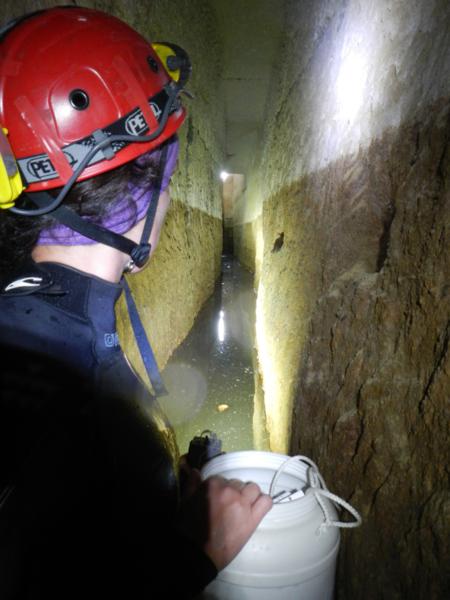
Il survey, che comprende anche lo studio delle antiche opere idrauliche, si colloca nell’ambito di un progetto pluriennale per lo studio del contesto urbano ipogeo delle chiese rupestri in corso di restauro.
Il progetto è autorizzato dal Ministero della Cultura Turco.
Il Centro Studi Sotterranei di Genova, grazie agli innumerevoli studi speleo-archeologici condotti in Turchia nel corso degli ultimi venti anni, si conferma come preciso punto di riferimento per chiunque sia interessato alla conoscenza del paesaggio antropico ipogeo dell’area.
16th INTERNATIONAL CONGRESS OF SPELEOLOGY
16th INTERNATIONAL CONGRESS OF SPELEOLOGY Brno 21/28 July 2013 Session: Speleological Research and Activities in Artificial Underground (Volume 2 pagg. 177–270)
The Proceedings have been published. A digital copy of the Proceedings will be placed on the Karst Information Portal www.karstportal.org, a UIS sponsored project, for free download.
Abstracts
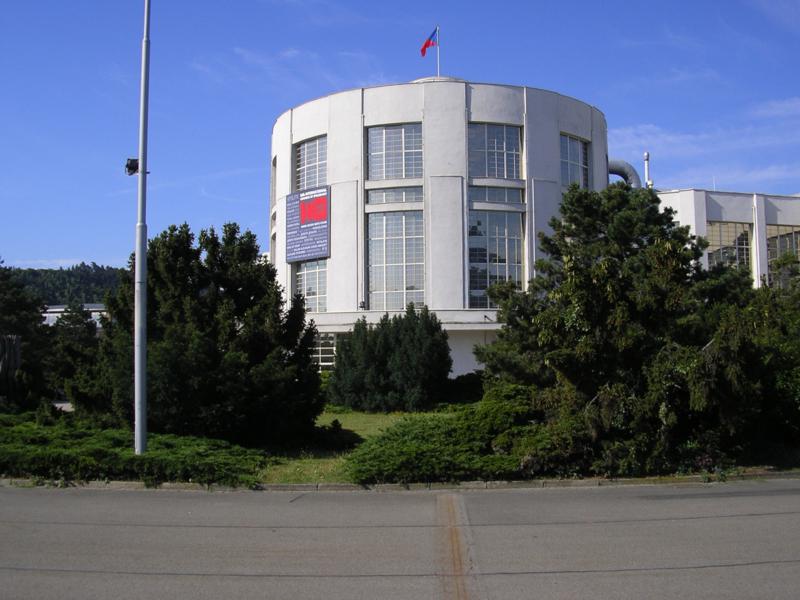
THE MAN-MADE UNDERGROUND CAVITIES OF NORTH-WEST RUSSIA
I. A. Agapov1, Y. S. Lyakhnitsky2, I. U. Hlebalin3
1Russian Geographical Society. Karstology and Speleology Commission, Saint-Petersburg, Russia – 2Russian Geographical Society. Karstology and Speleology Commission, Saint-Petersburg, Russia – 3Saint-Petersburg State University, Saint-Petersburg, Russia
In this article we consider the largest, interesting and meaningful man-made underground structures of North-Western Russia, which are located on the territory of Leningrad and Pskov Regions and the Republic of Karelia. These are: Sablinskaya, Staroladozhsky man-made caves, Petrovskaya underground quarry, cult caves Svyataya (“The Saint cave”) and Dolozhskaya, Taitsky sluice-way (Leningrad Region), underground complex of the Pskovo-Pechersky Dormition Monastery (Pskov Region), mine workings of Ruskeala and Rogoselga fields (Republic of Karelia). This review does not include fortifications and modern existing fields.
GOLD MINES OF THE 18th CENTURY: PAST AND PRESENT
Iure Borges de Moura Aquino1, Thiago Nogueira Lucon2, Hernani Mota de Lima3
1Universidade Federal de Ouro Preto, Ouro Preto, Minas Gerais, Brazil – 2Sociedade Excursionista Espeleológica, Universidade Federal de Ouro Preto, Ouro Preto, Minas Gerais, Brazil – 3Universidade Federal de Ouro Preto, Departamento de Engenharia de Minas, Ouro Preto, Minas Gerais, Brazil
In Ouro Preto, the gold extraction was started in alluviums and terraces, later interesting slopes rock masses, through underground mining. This mining left its marks, which are visible in the surroundings and inside the city. The discovery of gold in 1711 boosted the socio-economic life in Brazil, especially in Minas Gerais State, creating a new center of production and consumption. However, the fast population growth generated serious supply crisis in which the miners could not find food to buy. From the second half of the 17th century, with the gold decline, the Portuguese Royal Family came to Brazil, and a policy of attention to the mines was started, sending a specialist to observe the mistakes of the miners and to study and implement methods which could increase the production again. At first, the exploration was limited to the alluvial deposits, looking for the auriferous gravel. As the time passed, associated to the impoverishment of the alluvial deposits, the exploration of other kinds of deposits began, and new extraction techniques appeared, in which the workers opened galleries and tunnels following the layers with gold in all directions. At the slightest sign of impoverishment of these layers, the miners abandoned that workplace and opened another mine. This lack of technical knowledge accounted for the existence of several mines with varied extensions. The total number of mines opened during the gold cycle in Ouro Preto is not known, with some estimates ranging from 1,000 to 2,000 mine openings. Nowadays, many mines have inaccessible and/or hidden entrances. Some are still used as touristic attraction and/or as source of water collection for urban supply. The Sociedade Excursionista e Espeleológica (SEE; Excursion and Speleological Society) develops projects together with the Federal University of Ouro Preto (UFOP) and the local communities. The projects include hikes and visits to the places with remains of mining activities, aiming to locate and identify these remains, besides raising awareness of the local population about the importance of their preservation and also intending to recover some of the history of a time which was essential for the development of the country.
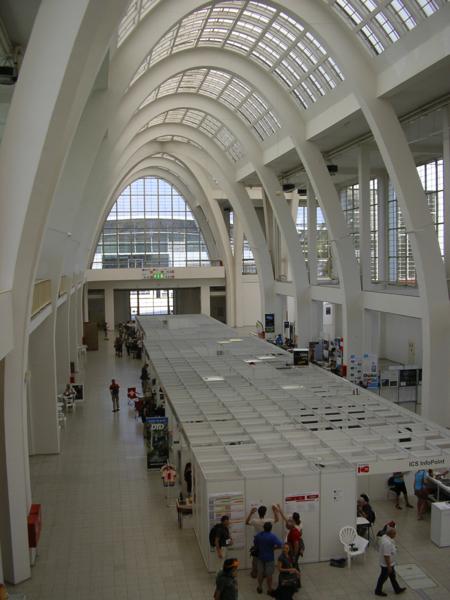
THE SUGANO MINES OF ORVIETO (ITALY): ALUMINIUM FROM VOLCANIC FIRE
Edoardo Bellocchi1, Chemical Technician1, Marco Morucci2
1Club Speleologico Proteo, Vicenza – 2Archaeologist, Gruppo Archeologico Alfina, Castelgiorgio
A speleo-minerary research discovered two mines in the Orvieto district, in Central Italy, where was extracted a leucite rich ore, a mineral formerly used to obtain alumina, an intermediate in the aluminium industry. The mining works started in the early 30s, and reached the peak in the mid-thirties till 1937, when the veconomic conditions imposed the abandonment of the exploitation. For the processing of this specific mineral G.A. Blanc developed an acid treatment. Blanc was an italian scientist known to the scientific community for his studies in ethnology, but almost unknown for his important researches in the mining industry and radioactive elements, in fact he was for two years a collaborator of the Curies in their laboratory in Paris. Here is given a short description of the site and the mineral, and a few aspects of the alumina extraction are represented with the process registered by Blanc. Eventually, the results of a series of radioactivity measures of the leucitic ore, a phonolytic tephra, are presented. Some aspects have dealt with a short text demands here, and will be developed in a further research text.
WORKSHOPS AND SURVEY RESULTS IN THE CHRIMA CINP PROJECT (EU PROGRAMME CULTURE 2007–2013)
Carmela Crescenzi
Dipartimento di Architetturav-dsp, UniFi,Via San Niccolò 93, 50125 Firenze, Italia
The activities carried out under the project activity of Crhima-cinp, an acronym standing for “Cultural Rupestrian Heritage in circum Mediterranean Area. Common Identity-New Perspective” is described in this paper. It has been financed with funds from the Culture Programme 2007–2013, Budget 2010, Strand 1.1 Multi-annual cooperation projects, Strand 1.2.1 – Cooperation measures. The project responds to the unitary purpose of the invitation Culture 2007–2013: contribute to enhancement of a cultural area shared by Europeans, the development of cooperation between the creators, operators, and cultural institutions of the countries participating in the Programme. The activities have promoted a new interest in the rediscovery of the rupestrian villages that characterize many countries of Europe and of the Mediterranean, populated until the last century, memory of layers tangible and intangible of great interest that is likely to be permanently compromised or destroyed. The project increased the exchange of information between the various Mediterranean countries by producing monographic studies on different sites, publishing new studies of little-known areas, and contributing with new materials at the scientific deepening of topics and at the dissemination of information. The report summarizes the experiences of the workshops carried out in some centers chosen as the site of the work, (Massafra in Italy, Saumur in France, Santorini in Greece and Ortahisar in Turkey). The work summarizes the major activities in the area with drawings and photographs that illustrate the differences and similarities of rupestrian settlements of each region under study.
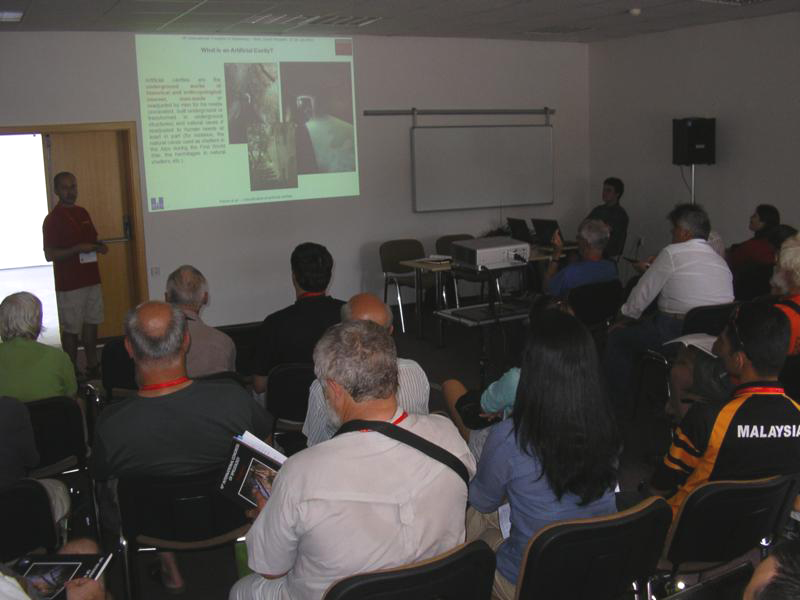
THE AUGUSTEAN AQUEDUCT IN THE PHLEGRAEAN FIELDS (NAPLES, SOUTHERN ITALY)
Graziano W. Ferrari1, Raffaella Lamagna2
1Via Vignati 18, I-20161, Milano, Italy – 2Via Cisterna dell’Olio 5, I-80134, Napoli, Italy
Romans built the 96 km long Campanian Augustean Aqueduct to bring fresh water from Southern Italy mountain springs to the densely populated areas of Puteoli and Baiae in the Phlegraean Fields. In the XVI and XIX centuries the ancient aqueduct was investigated in order to restore it to bring water to Naples, with no result. The section after Naples was never seriously investigated. From 2010 we are performing researches about underground hydraulic systems in the Phlegraean Fields. The paper reports about several findings in the area. Up to now, only few hundred meters of aqueduct are documented, out of more than 22 km. However, the little information gained already contributes to the comprehension of a very important ancient settlement area.
NERO’S OVEN: TEN SURVEYS ARE NOT ENOUGH
Graziano W. Ferrari1, Raffaella Lamagna2
1Via Vignati 18, I-20161, Milano, Italy – 2Via Cisterna dell’Olio 5, I-80134, Napoli, Italy
Nero’s Oven is an artificial cave placed in the Municipality of Bacoli (Naples, Southern Italy). A small network of passages leads to an underground pool of hot water. The passages were dug in Roman times as a sweater: hot steam was used to cure several ailments. The place was highly renowned also in medieval to modern times; wealthy foreigners in the “Grand Tour” to Rome and Naples were shown the passages and the hot water. The first printed survey of a cave (1546) is a rough plan sketch of Nero’s Oven passages. Subsequently, several researchers tried to cope with the internal temperature and steam to produce a graphic representation of the cave. The paper reports about the ten known surveys produced between 1546 and 2000 and the information they provide to modern speleological and archaeological research. Some information about the present state of the cave are presented. A modern cave survey has not been produced yet, since the outer rooms are used as a private dwelling.
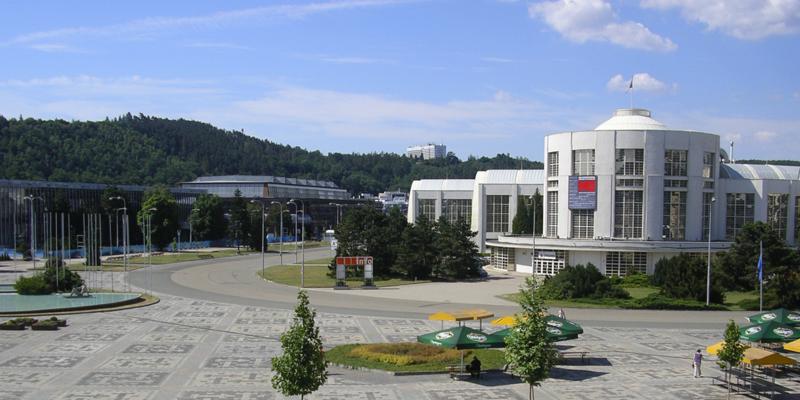
RESEARCH PROSPECTS OF OLD MINE WORKINGS IN THE URAL MOUNTAINS
Alexey Gunko
Russian geographic society, Naberezhnye Chelny, Russia
Mine development in the Ural Mountains (Russia) started 4–3 thousand years B.C. In the XVII–XVIIIth centuries commercial mining began. A lot of mines and adits have been retained till now. These mining old relics are of great interest not only for speleologist, but also for historians, biologists and geologists. On the Western and Eastern slopes of the Urals – copper, iron, gold, asbest, sulphur pyrite, alabaster, coal were extracted. The depth of some excavations reached 300 m and the area of some mine fields – reached 500 km². The total number of developed underground mines of the Urals at the beginning of the XIXth century exceeded 15–20 thousand. Speleologists are only at the very beginning of investigation of this rich region in artificial caves.
KUNGSTRÄDGÅRDEN, A GRANITIC SUBWAY STATION IN STOCKHOLM: ITS ECOSYSTEM AND SPELEOTHEMS
Magnus Ivarsson1, Johannes E. K. Lundberg1, Lena Norbäck Ivarsson2, Therese Sallstedt1,3, Manuela Scheuerer4, Mats Wedin1
1Swedish Museum of Natural History, P.O. Box 50007, SE-104 05 Stockholm, Sweden – 2Institutionen för Biologisk Grundutbildning, Svante Arrheniusv. 20C, SE-106 91 Stockholm, Sweden – 3Biologisk Institut, Syddansk Universitet, Campusvej 55, DK-5230 Odense M, Denmark – 4Carl-Rieder-Weg 6, AT-6130 Schwaz, Austria
At a depth of 30 m, Kungsträdgårdens subway station is the deepest station in Stockholm. It is also one of the few with easily accessible walls that are not covered in concrete, but where the Stockholm granite is exposed. On the granite wall a simple but complete and unique ecosystem has developed since the station was constructed in the mid-1970’s. The constant artificial light is a unique energy source in this subsurface environment and enables the occurrence of microbial communities dependent on photosynthesis with the primary producers being cyanobacteria, several species of diatoms as well as the bryophyte Eucladium verticillatum, not known from other locations in Stockholm. Top predator is the spider Lessertia dentichelis, with its only known population in Sweden. Closely associated with the ecosystem are secondary mineral precipitations forming flowstone, coralloids and small stalactites. The most common mineral is calcium carbonate, but there are also sodium sulfate depositions. A significant proportion of the mineralisations has been mediated by the present microorganisms, especially fungi. Characteristic for the microbial communities on the granite wall is that they appear to give rise to local geochemical conditions that influence microbial diversity, mineral precipitation and mineral dissolution, such as diatom ooze with calcium carbonates or a fungal – cyanobacterial community that might be responsible for speleothem formation.
UNFINISHED RAILWAY TUNNEL AND BUNKER AT GODOVIČ
Andrej Mihevc1, Aleš Lajovic2, Mateja Ferk2, Jure Tičar3
1Jamarsko društvo Logatec, Grič 10, SI-1310 Logatec, Slovenia – 2Jamarsko društvo Železničar, Ilirska 11, SI-1000 Ljubljana, Slovenia
3Jamarski klub Brežice, Mala dolina 9, SI-8261Jesenice na Dolenjskem, Slovenia
To enable better supply of the front line during the First World War, the military command started to build a standardgauge railway line from the main line at Logatec. The project began in April 1917 but in October the front line was pushed far to the west. The railway was no longer needed, so all work stopped and most structures remained unfinished. After the war, the new border between Italy and Yugoslavia passed close to the unfinished tunnel. Part of the tunnel was transformed into a bunker, one of many within the system of fortifications known as the Alpine Wall. After the Second World War the border moved away and both tunnel and bunker were forgotten and overgrown by forest. Apart from its unusual history, the structure is notable because work on it was halted in mid-construction, with the result that all stages of construction of the tunnel are well preserved.
RECOGNITION OF INSTABILITY FEATURES IN ARTIFICIAL CAVITIES
Mario Parise
National Research Council, Institute of Research for the Hydrogeological Protection, Via Amendola 122-I, 70126, Bari, Italy
Instability features may be observed in underground settings, including both natural and artificial caves. Recognition, mapping and documentation of such elements is of crucial importance to understand the likely evolution of the caves in terms of instability, and to evaluate the possibility of a direct involvement of the built-up areas above. Many towns and important communication routes are located in Italy above caves, which makes knowledge of the instability conditions an absolute priority for civil protection issues and land management. The role of cavers in the identification of instability features has been rarely taken into account, and always considered as a minor, often unnecessary, element in the stability assessment. Nevertheless, cavers are the only “eyes” underground, and have the opportunity to document what is really occurring. The present article aims at pointing out this crucial role of cavers, and illustrates some of the most common instability features in underground settings, both related to already occurred failures and to incipient signs of deformations. The issue is dealt with focusing on artificial caves, since these have been in the last decades at the origin of several problems in many towns and rural areas of southern Italy.
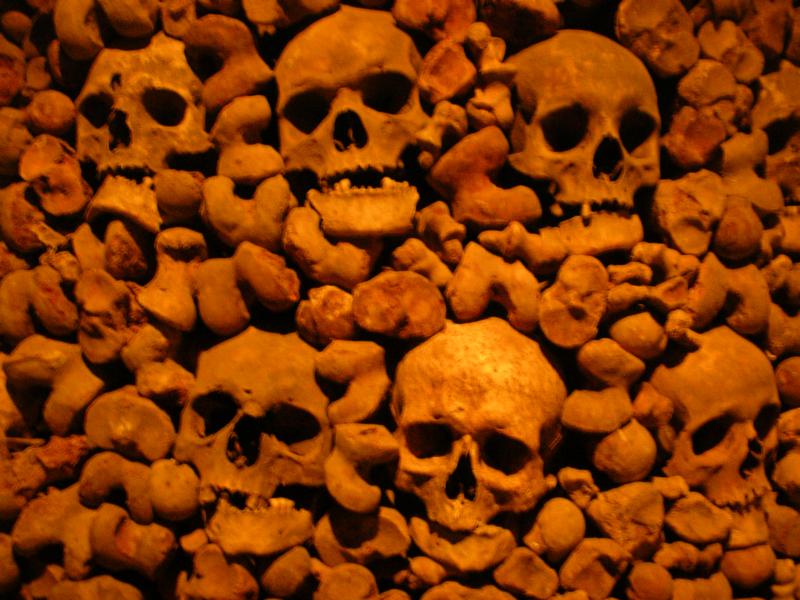
CLASSIFICATION OF ARTIFICIAL CAVITIES: A FIRST CONTRIBUTION BY THE UIS COMMISSION
Mario Parise1,2, Carla Galeazzi1,3, Roberto Bixio1,4, Martin Dixon1,5
1UIS Commission on Artificial Cavities – 2CNR, Istituto di Ricerca per la Protezione Idrogeologica, Bari, Italy – 3Egeria Centro Ricerche Sotterranee, Rome, Italy – 4Centro Studi Sotterranei, Genova, Italy – 5Subterranea Britannica, United Kingdom
The article representes a contribution by the Commission on Artificial Cavities of the Union Internationale de Speleologie (UIS) aimed at defining a general classification of artificial cavities. The amount and variety of cavities realized underground by man is extremely high, and cover with variable peculiarities many areas of the world. Nevertheless, it is important to perform an attempt in classifying such great variety, through a classification comprising at least the main categories of observed situations. Starting from the work carried out in past years by the Italian Speleological Society, it is here presented a classification of artificial cavities based upon time and modality of realization, and organized through a typological tree where seven main categories are defined, each one of them in turn subdivided into sub-types. We hope that, referring in the next future to this classification, it will be possible to better organize and describe the works and researches on artificial cavities, and compare the situations present in different areas of the world.
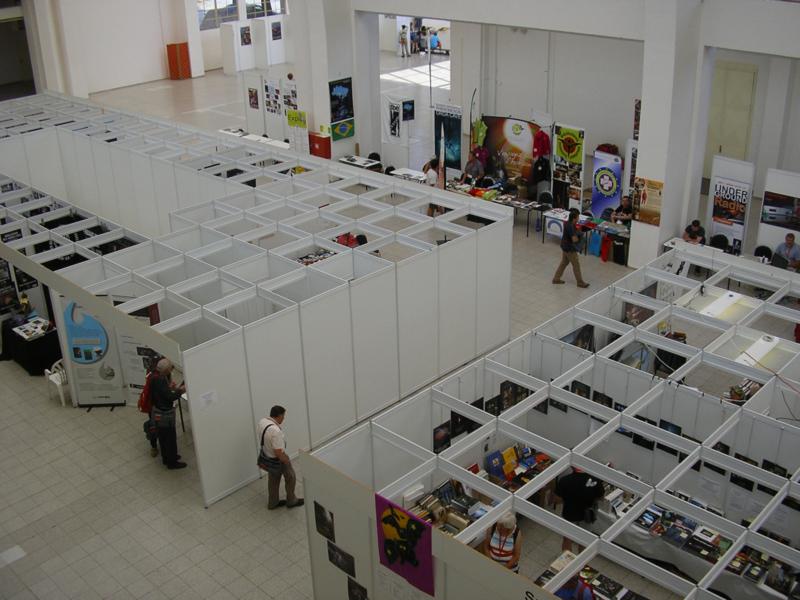
AN OVERVIEW OF THE GEOLOGICAL AND MORPHOLOGICAL CONSTRAINTS IN THE EXCAVATION OF ARTIFICIAL CAVITIES
Sossio Del Prete1, Mario Parise2
1 Geologist, Campania Speleological Federation, Naples, Italy – 2National Research Council, IRPI, Via Amendola 122-I
The habit of man to excavate artificial cavities began a very long time ago. Man’s efforts were initially moved by the need to have a safe place to live, to control the surrounding territory, to collect and transport water, to exploit the natural resources. For all these purposes, he had to face a number of geological and morphological constraints that, depending on site characteristics, guided, favored or complicated the excavation. Therefore, all the phases in the “life” of an artificial cavity, from the original idea, to planning and realization, up to its later evolution and possible conservation, depend in some ways on geology and morphology. Lithology of hosting rock is the first aspect to consider: the rock mass must allow hand excavation but, at the same time, it should present physical-mechanical characteristics such to support the newlyformed cavity. The geological and structural setting, including the main faults and the discontinuity systems in the rock mass, have to be particularly taken into account. Choice of the site where to locate an artificial cavity is also dictated by morphology, the morphological factors being, in turn, strictly related to land management and control. When safety reasons were considered to be the main priority, for instance, those sites that apparently were extremely difficult to excavate and to settle in were chosen. Morphology is also strictly related to slope instability. Several rock settlements situated at the borders of deep valleys and ravines are directly involved in mass movements, due to natural evolution of the slopes and to open cracks produced by the tensional release in the unsupported rock mass. Inside the artificial cavities, in turn, problems of instability may be observed. Locally, these may become so significant to compromise the overall stability of the structure. Slope instability processes deserve a greater attention from cavers and scientists, since their effects might be extremely dangerous for people visiting and working in artificial cavities, and for the cultural heritage therein contained as well. Availability of water resources is a further factor that controlled during historical times the choice of sites for settlements and towns. As a consequence, the hydrogeology plays a crucial role for artificial cavities, and particularly for those works intended to collect and transport water to settlers and inhabitants. Aqueducts, tunnels, fountains are, for the reasons above, very important to study in the context of the geological and hydrogeological setting, considering at the same time the social and historical aspects of the community that designed and realized them. The present contribution is an attempt in categorizing the aforementioned factors that play a role in the realization of artificial cavities. The topic is very wide, covering several interrelated disciplines and field of research, and should deserve to be treated with much greater detail and thoroughness. Our goal is therefore to stimulate with this article cavers and interested scientists in carrying out studies about the crucial role that geology and morphology have in the development of artificial cavities.
THE ANCIENT MINES OF USSEGLIO (TORINO, ITALY) MULTI-YEAR PROGRAMME OF RECORDING, STUDY, PRESERVATION AND CULTURAL DEVELOPMENT OF THE ARCHAEOLOGICAL MINING HERITAGE IN AN ALPINE VALLEY
Maurizio Rossi1, Anna Gattiglia1, Daniele Castelli2, Claudia Chiappino3, Renato Nisbet4, Luca Patria5, Franca Porticelli6, Giacomo Re Fiorentin7, Piergiorgio Rossetti2
1Civic Alpine Museum “Arnaldo Tazzetti”, Usseglio (Torino) – 2Department of Earth Sciences, Torino University – 3Artificial Cavities Commission of SSI – National Mining Engineer Association, Torino – 4Archaeobotany Laboratory, Venezia University Ca’ Foscari – 5Alpine Culture Research Centre, Exilles (Torino) – 6National University Library, Torino – 7ARPA Piemonte, Tematic Department of Geology and Instability, Torino
The programme started in 2001 and developed a large set of operations in order to create a geo-topographic and historicalenvironmental database, to rebuild the chronology (relative and absolute) of mining works in the Punta Corna complex (high Arnàs and Servìn valleys) and the extractive activities’ effects on the Usseglio economy and more broadly on Lanzo Valleys economy. The main part of the operations has been conducted directly by the Civic Alpine Museum staff, but in some aspects (such as deciphering medieval documents, mineralogy, petrography, GNSS surveys, aerial photography, restoration of the steel archaeo-mining finds, and so on), a strict co-operation with university teachers and other specialists or qualified technical figures was requested and realized. This open and multi-disciplinary approach will guarantee, also into the future, the best exploration and knowledge of this enormous heritage. According to the experience of the senior archaeologists (responsible to the Civic Alpine Museum), a group of underground experts – mining engineers and speleologists specialized in artificial cavities – will carry out explorations and surveys, to collect precious information connected to the external records.
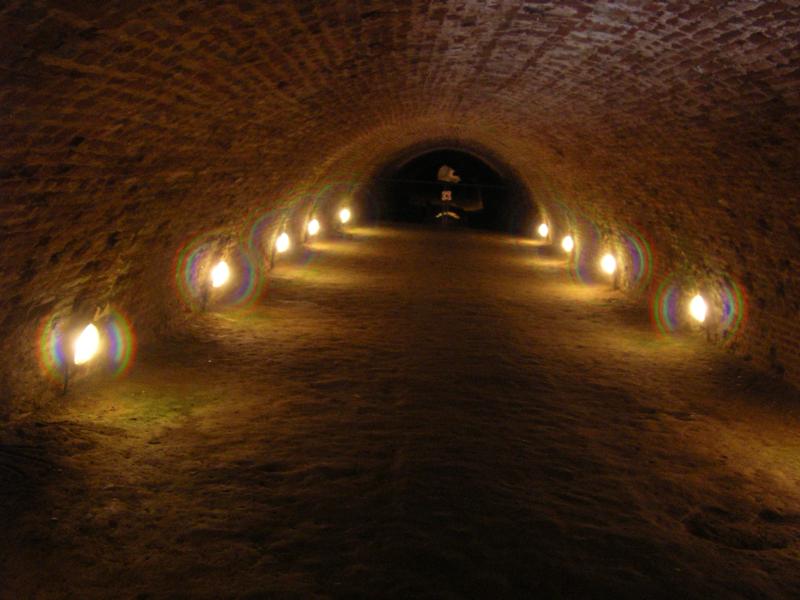
SAFE CAVES: THE DISTINCTIVE FEATURES OF HIDEOUT COMPLEXES IN THE GALILEE IN THE EARLY ROMAN PERIOD AND PARALLELS IN THE JUDEAN LOWLANDS (SHEPHELAH)
Yinon Shivtiel
Zefat Academic College; Cave Research Unit, Hebrew University of Jerusalem, Moshav Kahal, 12387 Hevel Corazim
Two types of subterranean chambers found in the Galilee – natural caves at the tops of cliffs (“cliffside shelters”) and rock-cut “hideout complexes” – shed light on Jewish defense methods there in the Hellenistic and Early Roman periods. The plans of 65 caves that may have served as hideout complexes are sketched, presented, and compared with hideout complexes in Judea. The subterranean complexes are divided into six categories:
1. Simple hideout complexes – crudely hewn, with dark, narrow passages.
2. Elaborate hideout complexes, hewn with great care and attractively finished and smoothed.
3. Hideout complexes hewn out of rock-cut subterranean chambers that had been used as storage facilities for agricultural products, cisterns, olive presses, or ritual baths.
4. Hideout complexes hewn out of burial caves.
5. Escape crawlways. These are rare, but Josephus describes one used during the siege of Jotapata during the Great Revolt to bring in goods and news.
6. Subterranean cavities that should not be identified as hideout complexes. This category includes cavities that some scholars have thought were hideouts but in my opinion are not because they lack the features of hideouts.
ARTIFICIAL CAVITIES OF GAZIANTEP (SOUTHEASTERN TURKEY)
Ali Yamaç, Murat Eğrikavuk
OBRUK Cave Research Group; Acikhava Apt. 16/7, Nisantasi, Istanbul, Turkey
After the Hagia Sophia and Topkapi Palace of Istanbul (Turkey) underground structures project that we carried out in 2008–2009 as OBRUK Cave Research Group, we began to prepare “Gaziantep Underground Structures Inventory” offered us by Gaziantep Municipality and CEKUL Foundation in November 2011. The aim of this project was to research, document, survey and making an inventory of the entire underground structure heritage which is within the borders of Gaziantep city and disappearing day by day because of the new constructions. It has been long known that Gaziantep, possessing a continuous inhabitancy since 3000 BC, has hundreds of underground structures which were carved in sandy limestone. Some of those underground structures were used as storage facilities or cisterns, while some others are as yarn ateliers today. Furthermore, despite forming a huge and complex system, underground water structures whose small part can be researched due to destructions are another important phase of that project. This study will provide an assessment of the underground structures, aimed at protecting this cultural heritage. Additionally, it is known that some of the caves dug mostly in soft limestone may collapse. This inventory study will be a reference for the future for preventing such potential hazards. The abovementioned project is basically aimed at detecting, measuring, mapping and studying all underground structures in the old settlement area of Gaziantep, with an Autocad program. Thereby, the relation between all the underground and aboveground structures would not be lost. As a result of the studies carried up to date, 48 artificial caves and water structures have been explored and mapped. The project is planned to be completed by the end of 2013.
SUBTERRANEAN “BELL-SHAPED” QUARRIES IN THE JUDEAN FOOTHILLS, ISRAEL
Boaz Zissu
Department of Land of Israel and Archaeology, Bar-Ilan University, Ramat Gan, Israel
The paper focuses on bell-shaped underground quarries, which were rock-cut in the soft limestone of the Judean Foothills during the Late Roman, Byzantine and especially the Early Islamic periods. These large and imposing artificial caves, typical to this region, located south-west of Jerusalem, were first described by scholars and explorers who visited the area in the 19th century. They were extremely impressed by the caves and suggested various theories regarding their function: cistern, granaries, dwellings, stables and underground churches. The phenomenon was discussed in a pioneering study, undertaken more than fifty years ago by Y. Ben-Arieh (1962) who explained the function of the subterranean caves as quarries, used for the extraction of the local chalky limestone. In the largest cave-clusters, around Beth Govrin, where the region’s biggest quarries operated, scholars estimate that their total number is over 800. Others estimate their total number in the region as being about 3,000. The aim of this paper is to present and describe the phenomenon according to new archaeological and speleological surveys. The current study focuses, among other issues, on the method of quarrying and on a re-examination of the chronology of the phenomenon, the carving methods, and the use and reuse of the caves.
THE ETHNO-CULTURAL FEATURES OF MAN-MADE CAVES CARVED IN THE NEOGENE PYROCLASTIC
FORMATION WITHIN THE ARMENIAN HIGHLAND AND NEIGHBORING AREAS
Smbat Davtyan
Armenian Speleological Centre
Pyroclastic rocks of the Neogene Period with numerous dugout cave dwellings are widely spread in the Armenian Highland, Iranian and Anatolian plateaus. There are different types of structures in the cave dwellings (rooms for living, churches, monasteries, tombs, household and auxiliary structures, underground paths), which have been created in the Middle Ages by Armenians, Georgians, Byzantines. The same type of rock-cave culture had been developed in the same geological unit by different ethnic formations located hundreds of kilometers far from each other.
UNDERGROUND MINES IN MOSCOW CITY
Yuri Dolotov
Russian Geographical Society, Pobedy 2a-70, 142280, Protvino Moscow Region, Russia
Within the modern administrative boundaries of Moscow, there is a significant quantity of abandoned underground mines which were the source of a relatively wide complex of natural resources: mainly limestones and subordinately sandstones, clays, and phosphorites. For that territory, the summary of the underground mines is provided, in accordance with the zoning scheme of speleology in artificial cavities (spelestology).
IPOGEI ARCAICI DI PONTE TERRA
Sabato 13 Aprile 2013
Giornata di studio
Ponte Terra: un’opera di ingegneria arcaica nell’Agro Romano Antico
Organizzata da Associazione Amici di San Vittorino in collaborazione con CRS “Egeria”, Italia Nostra Roma, Legambiente Tivoli
presso “Associazione Amici di San Vittorino” Via di San Vittorino, 268 – 00132 Roma
PROGRAMMA
Ore 11 – Interventi
Fabrizio Rossi (Associazione Amici di San Vittorino)
“Scopriamo il territorio: un ciclo di eventi per la conoscenza di San Vittorino e dell’Agro Romano Antico”
Carlo Germani (Centro Ricerche Sotterranee “Egeria” – Commissione Nazionale Cavità Artificiali SSI)
“Le indagini speleo-archeologiche condotte a Ponte Terra”
Vanna Mannucci (Italia Nostra Roma)
“San Vittorino e l’Agro Romano Antico: l’angolo della Capitale che è rimasto, semplicemente, campagna”
Gianni Innocenti (Legambiente Tivoli)
“Iniziative per la protezione, la tutela e lo sviluppo sostenibile del territorio”
Conclusioni e dibattito
Ore 13 – Pranzo in campagna
Ore 14.30 – Escursione nella Forra di Ponte Terra
Info e Contatti: Fabrizio Rossi
Associazione Amici di San Vittorino www.associazionesanvittorino.org – Cell. 3316243789 – 3474641275
Attenzione: per motivi organizzativi è richiesta la registrazione dei partecipanti. Inviare e-mail con indicazione del numero dei partecipanti a : info@associazionesanvittorino.org
L’OSCURO FASCINO DEL SOTTOSUOLO
Ciclo di incontri all’Auditorium dell’Acquario di Genova, Marzo – Aprile 2013
MERCOLEDI 13 Marzo Ore 17.50
“Anatolia Preistorica: un viaggio alle origini della nostra civiltà”
Introduce: Lilia Capocaccia Orsini (Presidente Associazione Amici Acquario di Genova)
Presentazione: Roberto Maggi (Docente Ecologia Preistorica Univ. di Genova) e Andreas M. Steiner (Direttore di ARCHEO)
Relatore: Andrea De Pascale (Comm. Nazionale Cavità Artificiali SSI, Conservatore Museo Archeologico del Finale – IISL)
MERCOLEDI 20 Marzo ore 17.50
“Dai templi sotterranei alle chiese rupestri medievali: un lungo percorso nei luoghi di culto ipogei”
Relatori: Roberto Bixio (Comm. Nazionale Cavità Artificiali SSI e Presidente Centro Studi Sotterranei di Genova) e Andrea De Pascale (Comm. Nazionale Cavità Artificiali SSI, Conservatore Museo Archeologico del Finale – IISL)
MERCOLEDI 27 Marzo ore 17.50
“Una cappella Sistina nella Cappadocia medievale: la chiesa nuova di Tokali a Goreme”.
Introduce: Roberto Bixio (Comm. Nazionale Cavità Artificiali SSI e Presidente Centro Studi Sotterranei di Genova)
Relatore: Maria Andaloro (Università degli Studi della Tuscia – Direttore della missione in Turchia “La pittura rupestre in Cappadocia:conoscenza e conservazione”).
MERCOLEDI 3 Aprile ore 17.50
“Il mondo sotterraneo degli antichi egizi: viaggio archeologico nell’aldilà”
Relatore: Alessandro Roccati (Professore Emerito di Egittologia Univ. Studi di Torino)
Acquario di Genova, ingresso libero fino ad esaurimento di posti.
